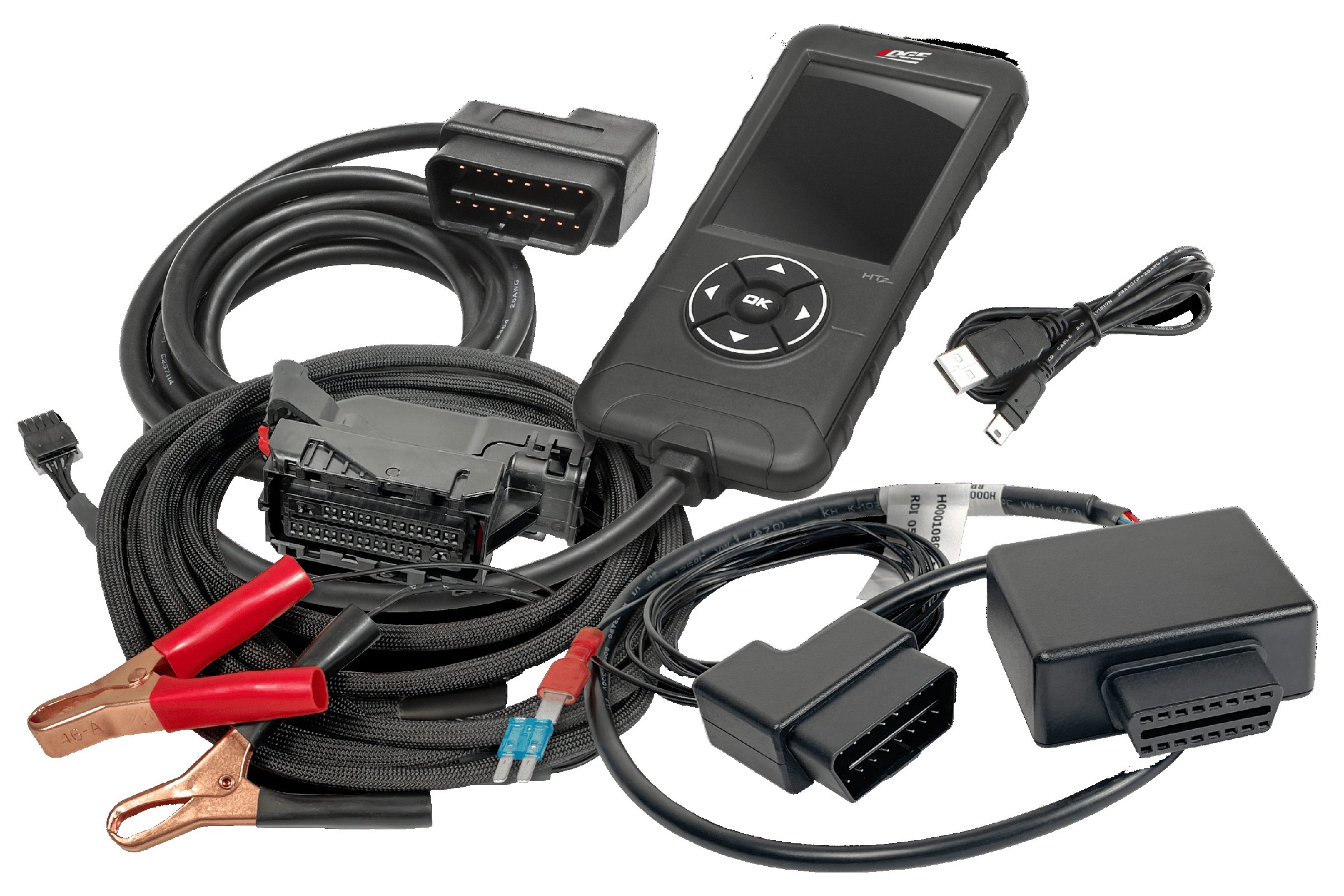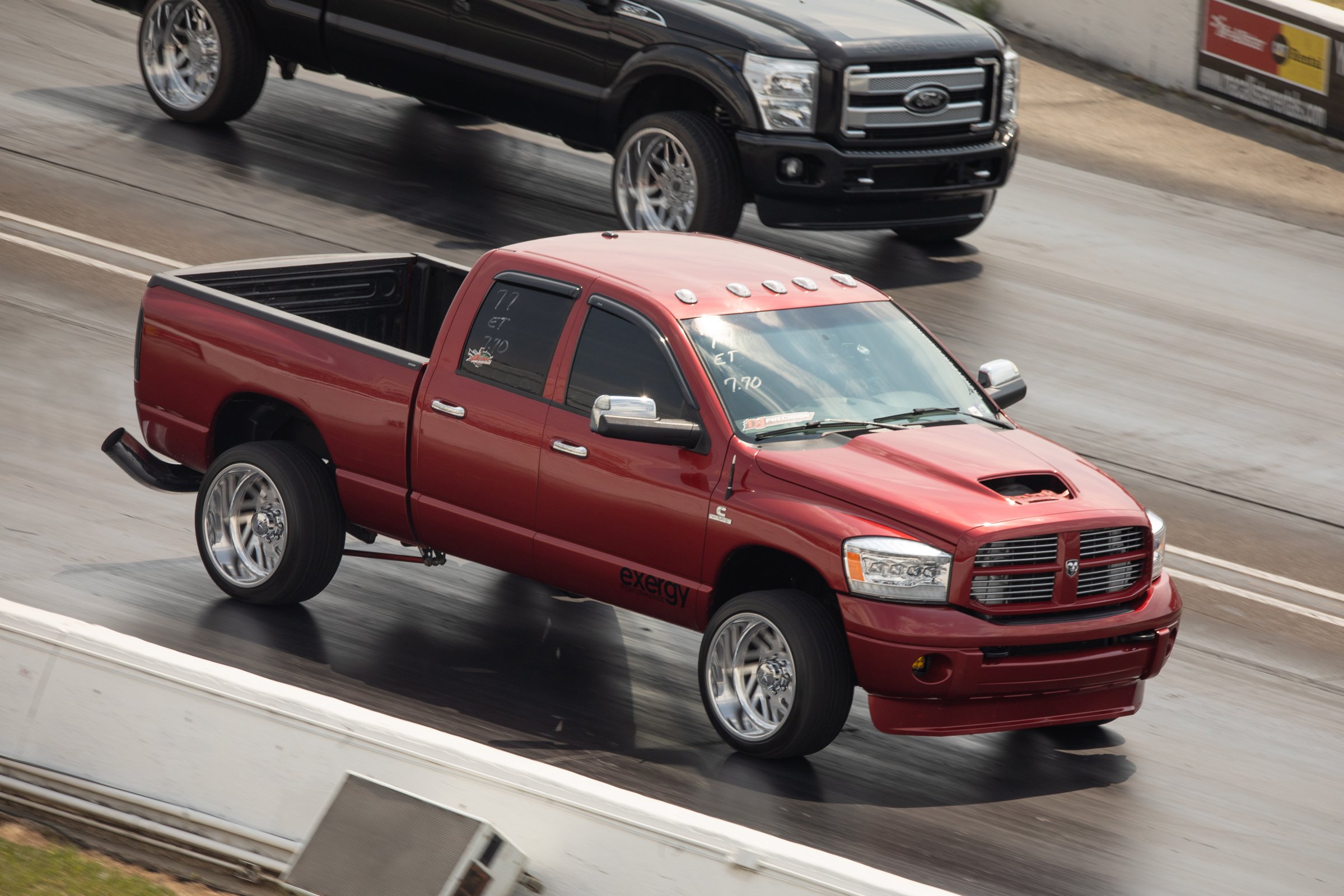Since you’re an avid reader of DieselArmy.com, I am certain that you actually use your truck to tow and haul things. It is why trucks are built. But as long as trucks have been making their way down the assembly line, truck owners have continuously searched for upgrades to improve their truck’s looks, performance, and towing capabilities. Such is the case with Project WorkHorse, our 2019 Ram 2500. For the latest upgrade, I decided it was time to add a set of air bags to the rear suspension to better support any loads in the bed and/or trailers connected to the truck. There are plenty of options available when looking at an air bag suspension, but I learned that Leveling Solutions has what every truck owner needs.

The first step required installing the upper brackets to the air bags. The brackets are right-side and left-side specific.
Since you use your truck, you have likely done a lot of research about suspension upgrades for towing, and there are various types of suspensions and suspension aids on the market. An air bag suspension is one of the most common additions to the list of options, and for good reason — they work.
The air bags to which I am referring are not the bags that tail-dragging low riders use. The bags we need for our working trucks will stabilize and level a truck when a heavy load is added. Whether that be a load of feed from a farm supply store or a trailer with 12,000 pounds strapped to it, the weight of your truck and the things you haul and/or tow need to be properly supported.
Adding Adjustability With Air Bags
The installation of the Leveling Solutions air bags is relatively easy. If you have access to some hand tools and a mechanical aptitude, you can easily add this upgrade to your truck in a couple of hours. The bags get installed on top of the rear axle and under the truck’s frame. There is no drilling or cutting required to mount the bags.
Once the air bags are installed, they then need to have a means of being inflated and deflated. The easiest and least expensive way to do that is to attach an air line to each bag and then run the lines to the rear of the truck where a Schrader valve is installed for each line. While that simple connection works, Leveling Solutions has another option that makes inflating and deflating the bags much easier, but it is a little more involved when installing. That said, it is well worth the small investment of time and money. If you want to make your new system easier to fill and deflate when necessary, you can add the Air Deployment System.

You will need to remove the upper bump stops on both sides of the truck as the bags will mount in this location. No drilling or cutting is required.
If you do add this upgrade, plan on adding a couple of hours for the installation, as you will be running air lines and wiring the system. Once the bags are installed, they are designed to help support any load as it is applied to the rear of the truck. These bags are not designed to support the entire weight of the vehicle (and load) themselves, but rather, add additional support (up to 5,000 pounds) to help the existing springs.

When you install the lower bracket to the bag, do not initially tighten it. Install it loosely so it can spin while attached to the bag. This is done so you can properly position the bracket with the bag temporarily installed on the truck. Once in position, place a mark on the bracket and bracket so you can retain the proper orientation. Then remove the bag from the truck, and then tighten the bracket screw.
As mentioned, the most convenient option for filling the bags is the Air Deployment System (P/N: 91726). This air delivery system is designed to give immediate control of the amount of air pressure in your air bags. The system includes a small air compressor, the necessary air lines, and a control panel with a pressure gauge and switch that is used to raise or lower the air pressure in the bags.
Having easy access to this adjustability is a no-brainer as it allows for immediate pressure changing of the bags. No more having to carry a separate air compressor and gauges to physically stand at the rear of your truck to adjust the bag pressure. In case you were wondering, if you have bags from another company, the Air Deployment System is a great upgrade for any airbag suspension aid.
Installing The Air Bag System
As I mentioned, the install of the Leveling Solutions air bags is easy, but the Air Deployment system does add some complexity to the install. Don’t let that keep you from utilizing this kit. Just keep in mind, you will need to take care of some simple wiring and routing of air lines, but the instructions are simple, and the routing diagram shows what gets connected where.

I mounted the Air Deployment compressor on the underside of the truck bed. It is high enough and protected by the inner splash guards for the rear wheel to protect it from water and debris. I will say this, the air compressor is noisy when operating so you will not want it inside the cab of your truck.
That said, I will tell you that the installation in WorkHorse did take me the better part of a day to complete. I did need to do some drilling of holes to run the wiring and air lines through the truck cab and some interior panels were removed so the wiring and air hoses could be routed. With most newer trucks, the interior panels simply snap into place and can be easily removed and reinstalled.

I ran my air hoses for the deployment system and the wiring through the inside of the cab to protect it. This required me to drill a hole for the hoses and wires to pass into the cab.
One way I did deviate from the instructions was with the control panel. During the installation, I initially mounted the control panel to the lower right of the dash. Unfortunately, I am a large person with pontoons for feet and I soon realized mounting the control at this location would eventually see it get kicked or pulled from the dash during entrance or egress of the truck.
To remedy that situation, I mounted the air adjustment switch from the panel in the dash, in the panel that houses the headlight switch. My thinking? This is a small panel that could easily be replaced if I botched the installation. I didn’t botch it, and all is good. I do however need to find a suitable location for the gauge. I am still looking at how to mount it, and have it temporarily located it within the system until I make a final decision.
Since the mounting of the assembled control panel for the Air Deployment would be in jeopardy of being kicked by my big feet, I decided that an alternate solution was needed. I mounted the control switch for the air compressor in a dash panel next to the headlight switch. It looks clean and is within easy reach. I am still deciding on a permanent solution for the gauge.
As far as air line routing, the instructions with the Air Deployment System show the air lines from the bags connecting to a single T-fitting and then branching off to each bag. As I was looking at this, I realized it is a widely acceptable practice. Some might feel this could allow air to travel from one bag to another, and this is true. However, if you are safely hauling a load, you surely have it centered in the truck which will negate this concern. There is no reason any load should be placed with more weight on either side of your truck.
Locked And Loaded
Anyway, with the installation complete, it was time to give the systems a try. I connected my gooseneck trailer to WorkHorse and then loaded it with a John Deere A and a gas-powered golf cart. While standing next to the truck, I initiated the inflation of the bags with the Air Deployment System. As soon as I saw the trailer and truck level, I released the switch and checked the pressure gauge. All is well at 42 psi.
For the safety of everyone around your truck and to prevent possible unwanted air expulsion from the bag (BOOM), do not exceed the maximum load recommended by the vehicle manufacturer (GVWR). Air bags are rated safe with a maximum inflation pressure of 100 psi and should not be used with less than 15 psi.
When inflating your Leveling Solutions air bags, add air pressure in small quantities, checking pressure frequently during inflation. Air bags require much less air volume than a tire and, therefore, will inflate much quicker.
Do I think spending the day installing the Leveling Solutions air bags and Air Deployment system was worth it? Definitely. If you are using your truck to haul things and/or a trailer to haul stuff, it’s a great investment.






